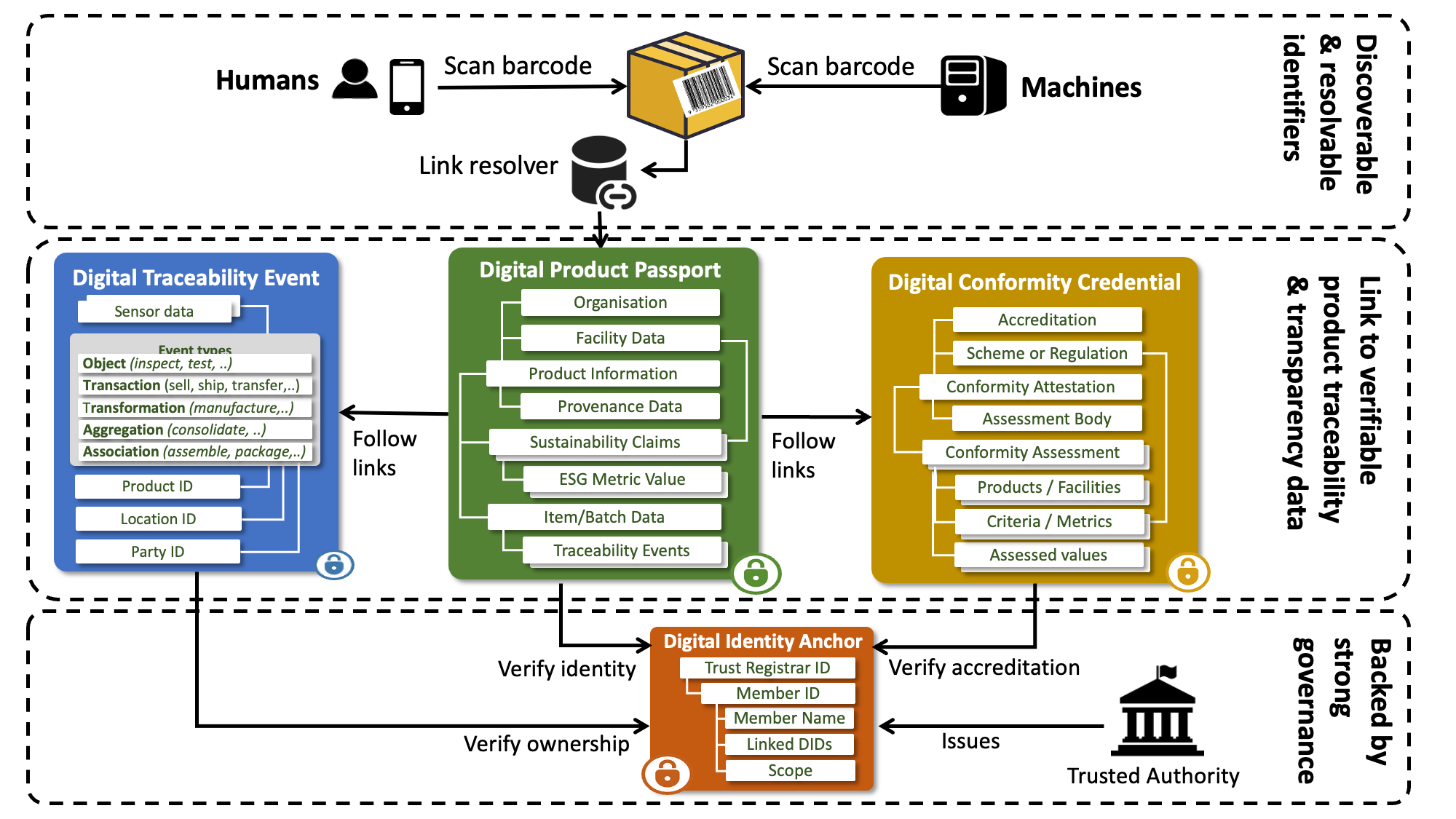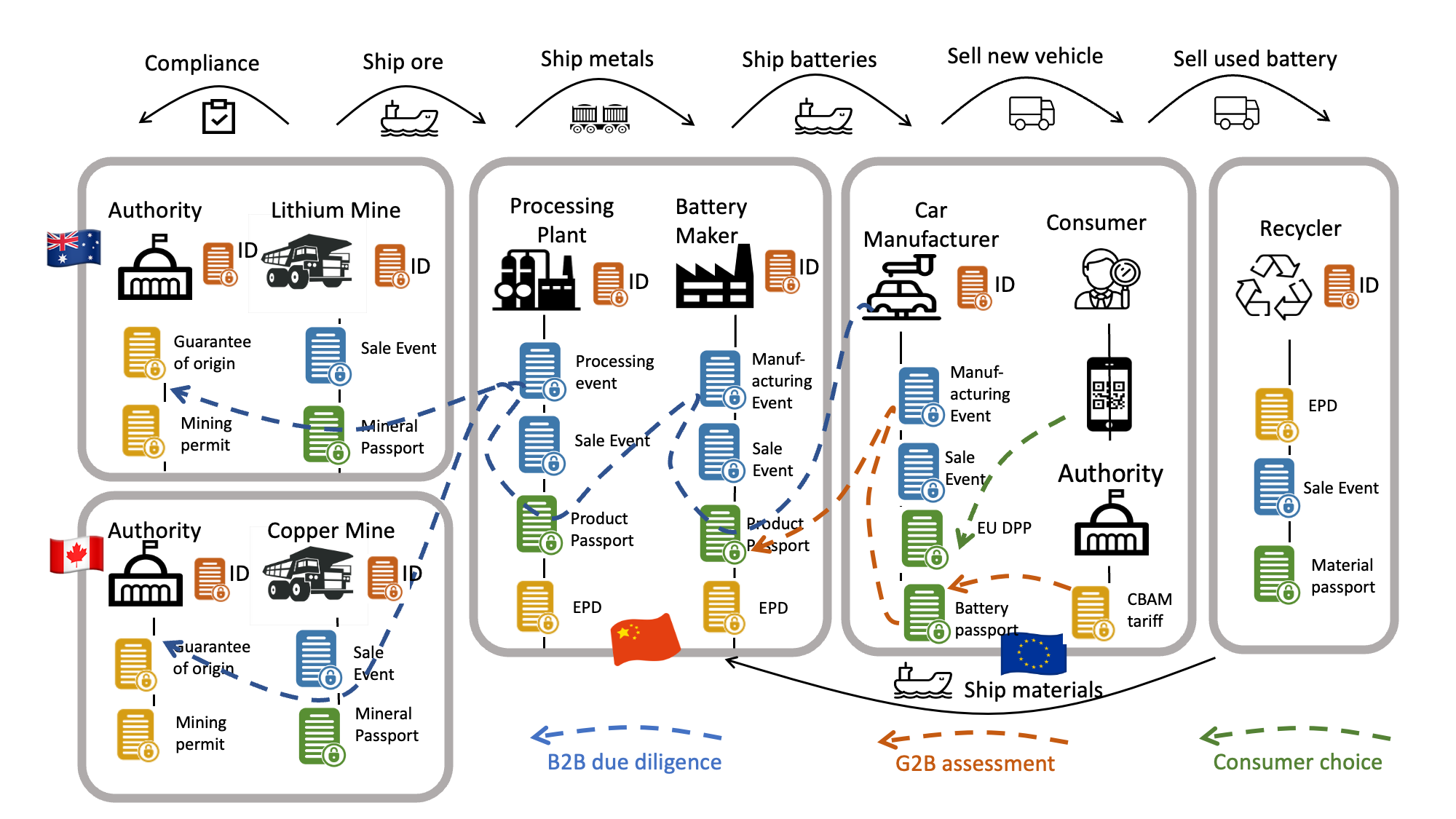Architecture
info
Please note that this content is under development and is not ready for implementation. This status message will be updated as content development progresses.
The architecture is the blueprint for all the components of the specification and how they work together. It defines the design principles and challenges which underpin the UNTP-CRM and shows the components working together from the perspective of a single actor and across the entire value chain. The UNTP-CRM is a fundamentally decentralized architecture with no central store of data.
Design Principles
- In alignment with the UNTP extension methodology, UNTP-CRM aligns as closely as possible to UNTP and clearly identifies and explains any adaptations required for use by the CRM industry.
- Simple and implementable always wins over expansive & complex.
- Open and free is a fundamental requirement.
- Collaborative development encourages buy-in.
- Decentralized models will always be more scalable than centralized ones.
- Independently verifiable claims are more credible.
- Learn and leverage existing ecosystems, methodologies, standards and approaches.
Design Challenges
Implementing end-to-end supply chain traceability at scale faces a number of challenges.
| Challenge | Our approach |
|---|---|
| A plethora of platforms exist already | We must focus on interoperability between systems, not picking winners. We’ll also provide guidance on how existing systems can extend their capability to support interoperability. |
| Technology maturity is variable | We must accommodate small businesses and developing nations and allow a gradual transition from paper processes. |
| Most traceability pilots have not scaled to production volumes | We must design simple and scalable solutions that can be implemented at scale |
| Supply chain actors will not expose sensitive data | We must allow stakeholders to protect sensitive commercial information whilst revealing ESG info. |
| ESG claims have different levels of trust | We must provide sufficient evidence to trust the claims. |
| Greenwashing fraud is endemic | We need to explicitly identify greenwashing fraud vectors and how to solve them – including product substation, mass balance, etc. In particular, in CRM, suppliers have taken the approach of inserting a middleman and obscuring the traceability to the source. A goal of this approach must be the traceability of claims back to the point of extraction, as required by the OECD due diligence handbook. |
| Cost | The solution must be cheap enough that there remains a plentiful margin incentive for producers and manufacturers to change behaviour. |
Components
See the UNTP Technical Specification, for purpose and description of the following components:
- Verifiable Credentials Profile (VCP)
- Digital Product Passport (DPP)
- Digital Conformity Credential (DCC)
- Digital Traceability Events (DTE)
- Digital Identity Anchor (DIA)
- Identity Resolver (IDR)
- Decentralised Access Control (DAC)
- Sustainability Vocabulary Catalog (SVC)
Each Actor

Entire Value Chain

- Technical Specification
- Material Passports